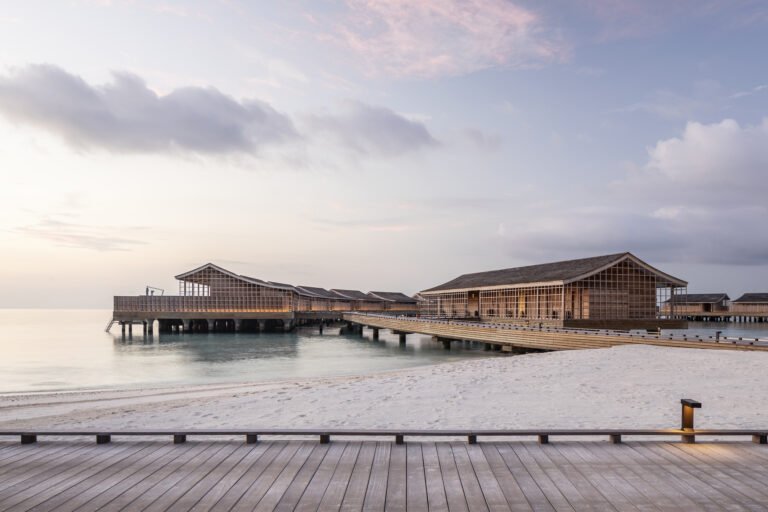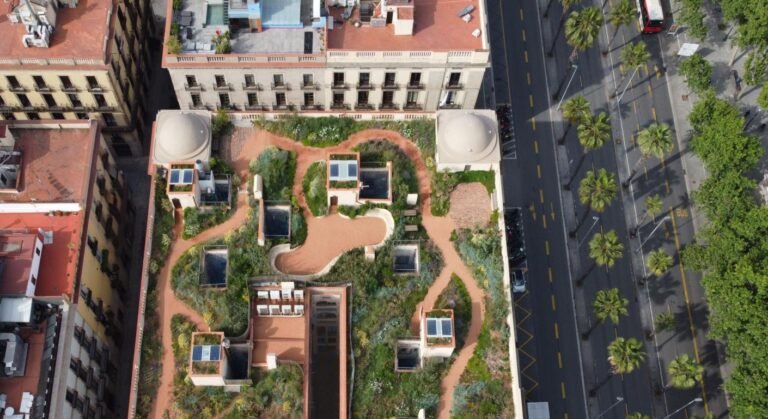“The Environments Wanted to be Abstracted”: Stefan Dechant on The Tragedy of Macbeth
“The Environments Needed to be Abstracted”: Stefan Dechant on The Tragedy of Macbeth

Stefan Dechant is a production designer with over 25 years of experience in the industry working alongside reputable filmmakers like James Cameron (Avatar), Tim Burton (Alice in Wonderland), and Sam Mendes (Jarhead). Recently, Stefan served as the production designer for the upcoming Apple TV+ film ‘The Tragedy of Macbeth’ directed by Joel Coen. Why did this interest us immediately? Because he had the task of creating 35 Black & White, Abstract Sets.
In the following interview with Stefan, he tells us all about the inspiration behind the aesthetic, his working process between sketches and digital, and finally the stage of building all of this. Read more below.


Fabian Dejtiar (FD): Collaborating with director Joel Coen and Director of Photography Bruno Delbonnel, in The Tragedy of Macbeth you created a world defined by light and shadow – all black and white. What is the inspiration behind all this? where did you get references from?
Related Article
Jacinta Leong on Architecture in Movies: “Films Can Tell Us How Things Are and How Things Can Be”
Stefan Dechant (SD) At our first meeting Joel talked about this film not being a naturalistic interpretation of Macbeth. He never wanted to set aside that the original text was created for a theatrical presentation. In doing so he wanted the imagery to be theatrical in nature but still cinematic. The environments needed to be abstracted. He wanted, “Not a castle, but the idea of a castle.”

For several months before I started, Joel, Fran, and our cinematographer, Bruno Delbonnel, had been working together on what this abstraction might be. During that time they had decided that the film would be shot in black and white and that the aspect ratio would be academy format. They had also worked on developing a collection of reference imagery that ranged from architectural photography and paintings to frame grabs of other films and some of their own photography. Joel and Bruno took these images and broke them down into groups of inspirations for all our sets. Some of the films referenced in those prints were; THE PASSION OF JOAN OF ARC, SUNRISE, NIGHT OF THE HUNTER, DIE NIBELUNGEN: SIEGFRIED. They were films that were heavily abstracted and expressionistic. This collection became the ingredients for us to create our own look.

FD: I noticed that you mix hand drawings and computer renderings while developing your ideas. How is your work process? Any recommendations for the new generations that use more digital tools?
SD: When I started on Macbeth, I had 10 weeks to design and build 33 sets. That was a pretty tight schedule. I knew that the sets would be gestural and that light and shadow would be integral to the design, so I felt the fastest way to move through the design would be to “sketch” these sets using 3D modeling software. We brought in 4 set designers who could model very quickly.



I would sketch out on paper what I was roughly looking for and they could take it from there. This allowed us to develop 3D environments in just a couple of days in which Joel and Bruno could look at through a digital lens. We started this process with all our “known” sets, those sets that Joel had broken down how he wanted to shoot them and had enough reference images that we didn’t need illustrations. For the unknown sets, those sets that were still amorphous in their design, I worked with another set designer where we would pound out loose concepts very quickly. On those sets, I would also work with a concept artist and at times paint up ideas in Photoshop myself. It was a two-prong approach that helped us cover a lot of territories very quickly. It was the perfect synergy between the analog and the digital. My recommendation for young designers entering into the art department is to always keep sketching. Keep that loose, gestural way of communicating. If you can do that with a pencil, then you can do that with any digital device.


FD: The film required 33 sets in only 10 weeks before filming started. How did you manage to scale all this work? How do you deal with deadlines given the fact that the film industry operates fast?
SD: To accomplish this amount of work this quickly, it’s important to separate your sets into knowns and unknowns. I start pouring my resources into sets I have a pretty good grasp of. This allows me to develop an overall sense of the tone of the film, and it starts feeding the construction department quickly. You only have so much time to develop and build these designs. You need to take advantage of that time. Maybe half to two-thirds of the art department will start working on the “knowns,” while the rest will start developing the “unknowns.” We try to crack those “unknowns” through illustrations and research imagery. In the case of Macbeth, we also went straight into 3D modeling.



FD: This film is now added to your large portfolio – where you worked as the production designer for great films such as The Call of the Wild, Kong: Skull Island, and Pacific Rim: Uprising, etc. what are you with now? Are you working on new projects?
I am currently finishing up work on Pinocchio with Robert Zemeckis. I have been co-designing with Doug Chiang. It’s been a wonderful project to work on.


–
Stefan Dechant is a Los Angeles-based production designer with over 25 years of industry experience working alongside reputable filmmakers like James Cameron (Avatar), Tim Burton (Alice in Wonderland), and Sam Mendes (Jarhead). He worked on over 30 films in a variety of roles including illustrator, storyboard artist, art director, and production designer.
Recently, Stefan served as the production designer for the upcoming Apple TV+ film The Tragedy of Macbeth, directed by Joel Coen (No Country for Old Men, True Grit), which premieres on December 25. His latest production design credit was for Disney’s upcoming film Pinocchio, his seventh film working with director Robert Zemeckis (Forrest Gump, Beowulf).
Stefan won the Online Film and Television Association (OFTA) Award for Best Production Design for his art direction on James Cameron’s Avatar. His work on Tim Burton’s Alice in Wonderland also earned him nominations for production design awards from the Art Directors’ Guild, OFTA, and Satellite Awards. His additional film credits include Forrest Gump, Contact, Cast Away, Minority Report, Lincoln, True Grit, Kong: Skull Island, The Call of the Wild, and Jurassic Park.






